Home / Resources
Resources
Discover a Wealth of BPM Knowledge and Expertise at BPMInstitute.org!
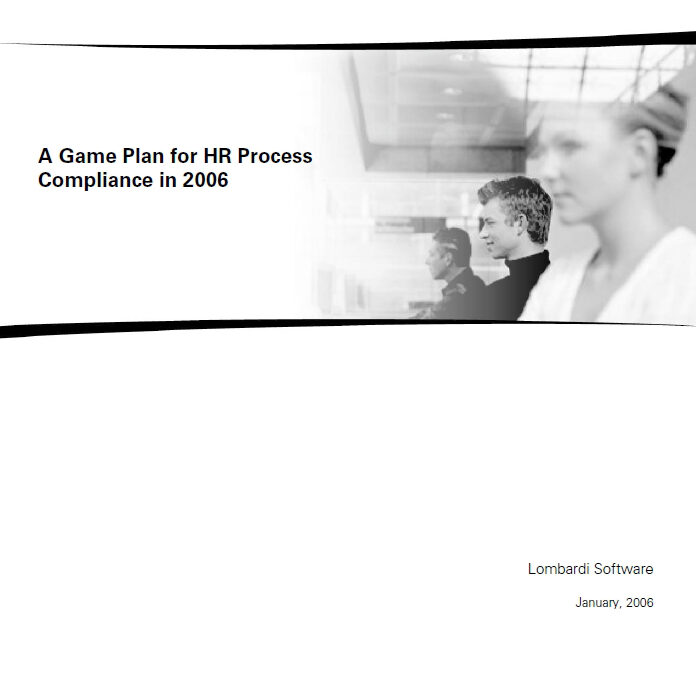
A Game Plan for HR Process Compliance in 2006
Last year, leading companies like Allianz Life, Dell and Pfizer tackled compliance and process improvement at the same time. There chose many different HR processes to automate – ranging from new hires and pay changes to computer access requests. In each case, the companies recognized that an investment in technology was required to gain better control over their processes.
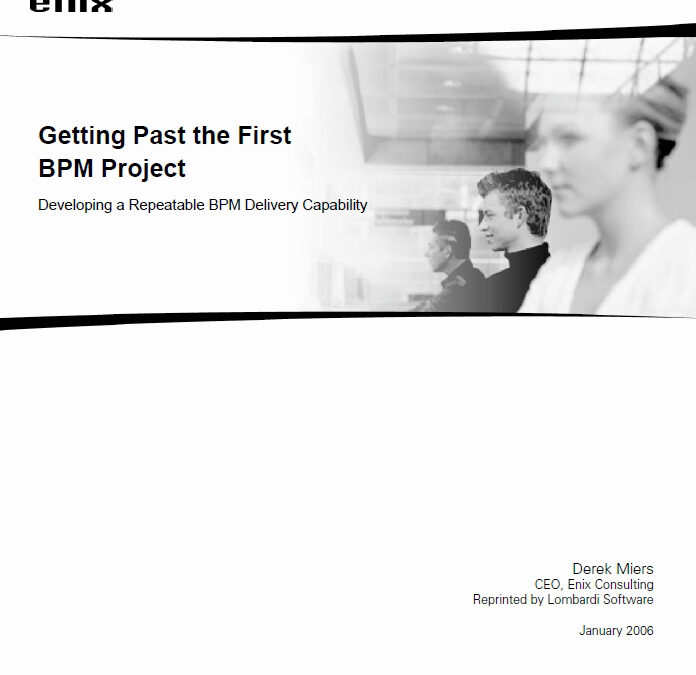
Getting Past the First BPM Project
Derek Miers, CEO of Enix Consulting, offers key tips on knowing when your company is ready to expand and best practices observations on how to do it in his new white paper, Getting Past the First BPM Project: Developing a Repeatable BPM Delivery Capability. This paper explores how companies such as Hasbro and Pulte Mortgage have successfully made the transition from their first BPM implementation to multiple processes, enterprise-wide.
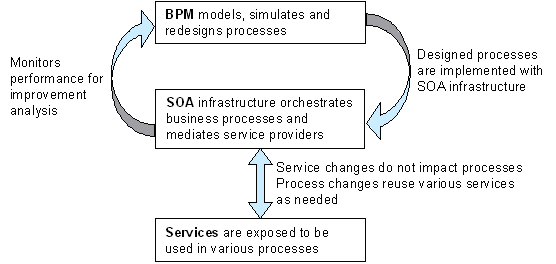
SOA Needs BPM
The increasing success and ease of global competition places unprecedented pressures on enterprise revenues and profitability. The result is that enterprises are trying to do multiple things at once. Business units are told to be flexible and deliver new services quickly but at the same time to lower operational costs. Enterprises have mandates to continuously change and improve their processes, yet are also need to reuse existing business automation.
Mining Rules From Code: Plan It Well
In a past BR Bulletin, the article “Business Rule Mining: Reasonable or Lunacy” presented how to determine if business rule mining would help your project. Each organization is faced with numerous legacy applications that have become “black boxes.” Business rule mining is a systematic approach of extracting essential intellectual business content (business rules) from packaged or legacy software, recasting them in natural language, and storing them in a source rule repository for further analysis or forward engineering.
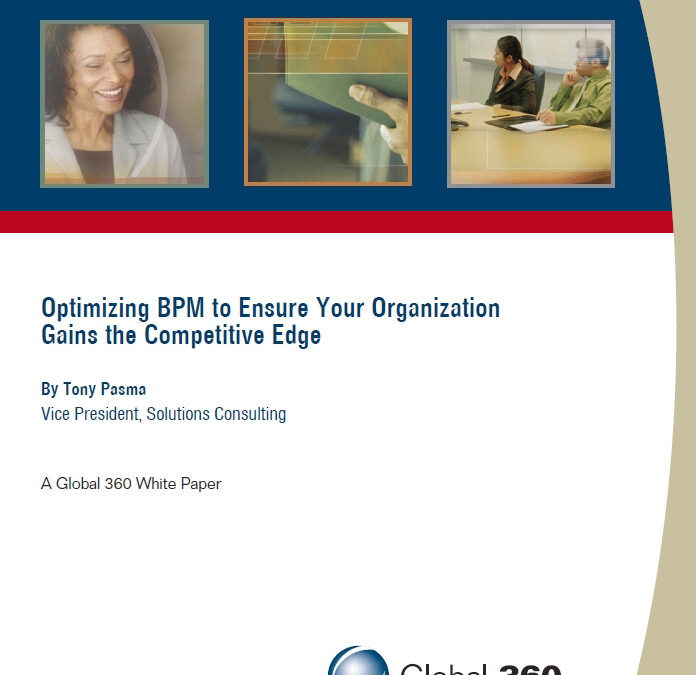
Optimizing BPM to Ensure Competitive Advantage
In order to be effective, BPM should be optimized to enable companies to gain insight into their processes in real-time and change them, in many instances automatically, in order to create greater value. Optimized BPM is the ability to address both the real-time optimization of individual processes “in flight” and identify strategic changes to business processes to drive long term value and cost savings. Optimized BPM is the enabler that emphasizes the continuous improvement of processes that most directly affect corporate performance goals.

Five Principles For BPMS Methodologies
These are exciting times. Business Process Management Suites (BPMSs) are becoming increasingly mature, and we are witnessing the emergence of the BPMS Center of Excellence (CE) in a number of large Fortune 1000 organizations. These are also challenging times. We are bombarded with confusing messages when it comes to the methodologies, tools, and overall culture that need to be developed within an organization to realize the full potential of the BPMS CE.
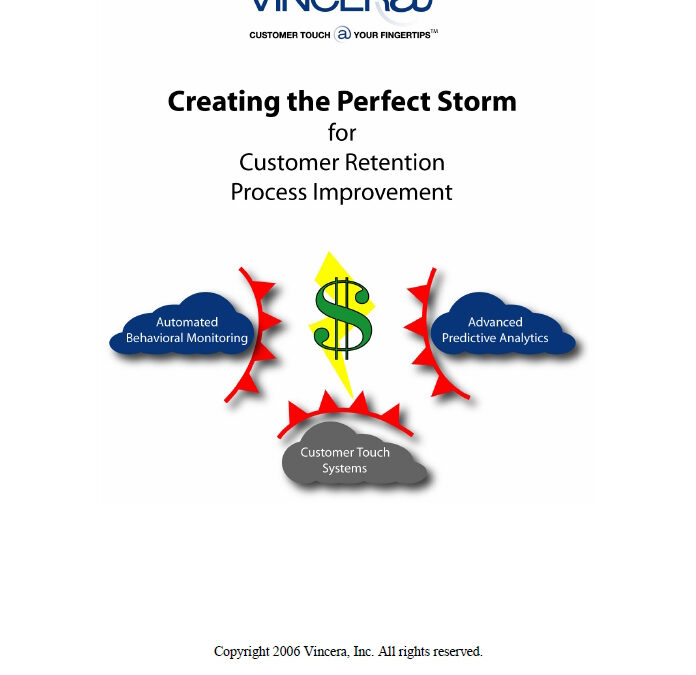
Creating the Perfect Storm for Customer Retention Process Improvement
Successful Sales and Marketing departments are dynamic torrents of process-driven activity. A calm day in the sea of sales means revenue opportunities are being lost or going by the wayside. This is just as true in customer retention as it is in customer acquisition.
Once a prospect signs on the dotted line and becomes a customer, effective processes need to be in place to monitor, measure and manage customer satisfaction and loyalty and, in turn, maximize each customer’s value.
The Future of BPM
Business Process Management offers the ability to improve business processes significantly..
The same technology that supports BPM also can be used to implement composite applications and service-oriented architecture. Vollmer explores these additional capabilities and shows how they are changing the business landscape.
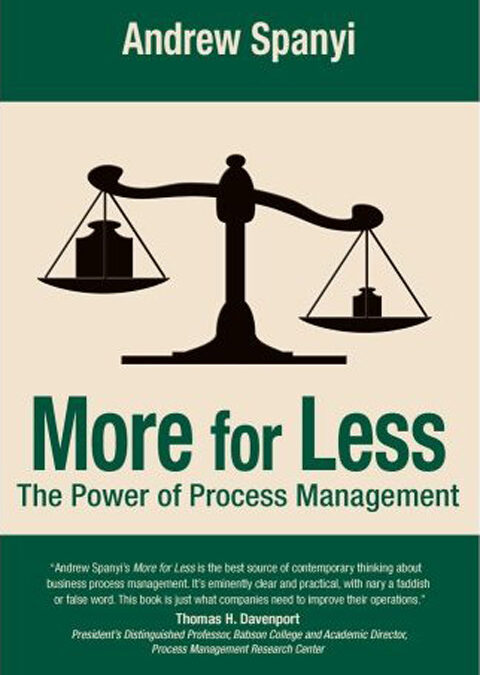
More for Less: The Power of Process Management
What do your customers really want? More for less, of course! That can hardly come as a surprise to you. After all, whether you are a senior executive, a middle manager, or a front line worker, you’re a customer yourself.
As a customer, what “more” do you want? More value, more service, more consistent, flawless delivery performance, more accuracy, and even more responsiveness? You bet. Chances are that increasingly, you want to pay “less” for this “more” don’t you?
Your customers are no different, and that’s a problem because unless you can provide your customers with “more for less,” you can be assured they will find someone else who can, and sooner rather than later.

BPEL4People Revisited
The world of BPMS is divided into BPEL-lovers and BPEL-haters, and the thing that BPEL-haters seem to hate most is that even the not-yet-final 2.0 version of the OASIS standard “excludes” human tasks. How can you have a “business process” execution language that cannot accommodate human-performed activities? “Out of scope”?! Are you kidding?
Of course, if you’re a BPEL vendor interested in selling to the BPM market, you have to integrate human tasks somehow, and they all do already. It’s just that they all do it slightly differently.
The world of BPMS is divided into BPEL-lovers and BPEL-haters, and the thing that BPEL-haters seem to hate most is that even the not-yet-final 2.0 version of the OASIS standard “excludes” human tasks. How can you have a “business process” execution language that cannot accommodate human-performed activities? “Out of scope”?! Are you kidding?

Enterprise Business Architecture (EBA) and Service Oriented Architecture (SOA) Initiatives
Most companies today have a strategic initiative focused on Service-Oriented Architecture (SOA) development. Some of these efforts struggled in the early days, but many now have clear goals and measurable objectives. Many of these same companies also have an Enterprise Business Architecture (EBA) initiative as well, or at least some type of Business Process Modeling or Business Process Management initiative. Here again, initially it was a struggle, too.
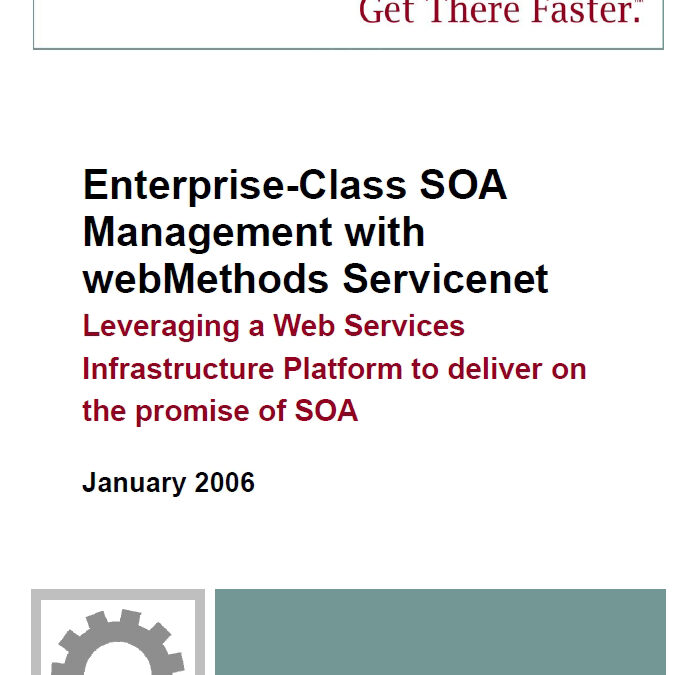
Enterprise-Class SOA Management with webMethods Servicenet
Web services anarchy can return IT implementations to the dark days of brittle and unstable systems that are hostile to change and drain large amounts of resources just to keep running. An SOA management framework is required that provides registration of services, change management and versioning support, security facilities, service monitoring, service management and event handling. This technical whitepaper introduces webMethods Servicenet – a comprehensive web service management platform that delivers a shared infrastructure for SOA-based applications.

Successful Process Improvement Requires the Right Mindset
To best take advantage of the power of BPM technology, enterprises first need to achieve a certain aptitude and the right attitude for understanding and improving the firm's large business processes. BPM is not a trendy technical fix for problems. It is a discipline...
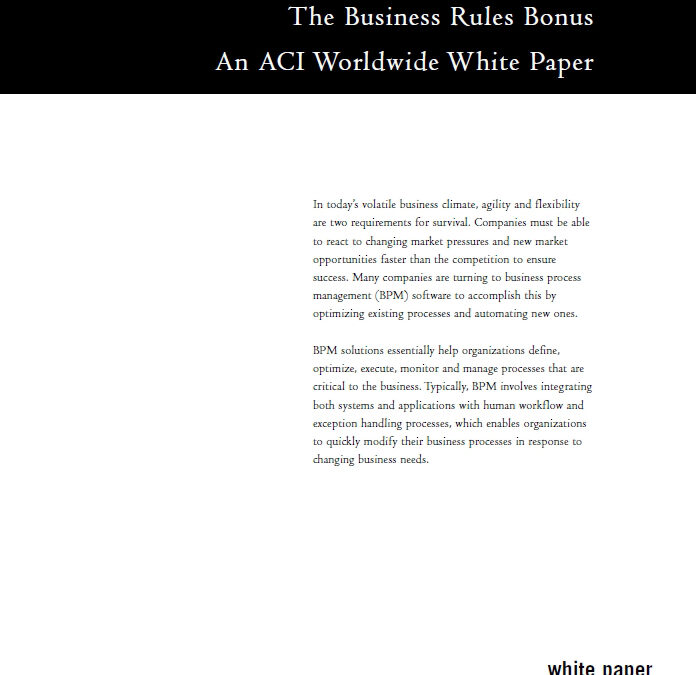
Strategic BPM: The Business Rules Bonus
Business process management (BPM) enables organizations to define, optimize, execute, monitor and manage critical processes. However, business rules technology (also known as a business rules engine or BRE) is an equally important, complementary technology.
Any organization evaluating BPM should explore the role that business rules play. This paper identifies the value of both BPM and BRE and discusses where the combination of the two can maximize the business benefits to an organization.
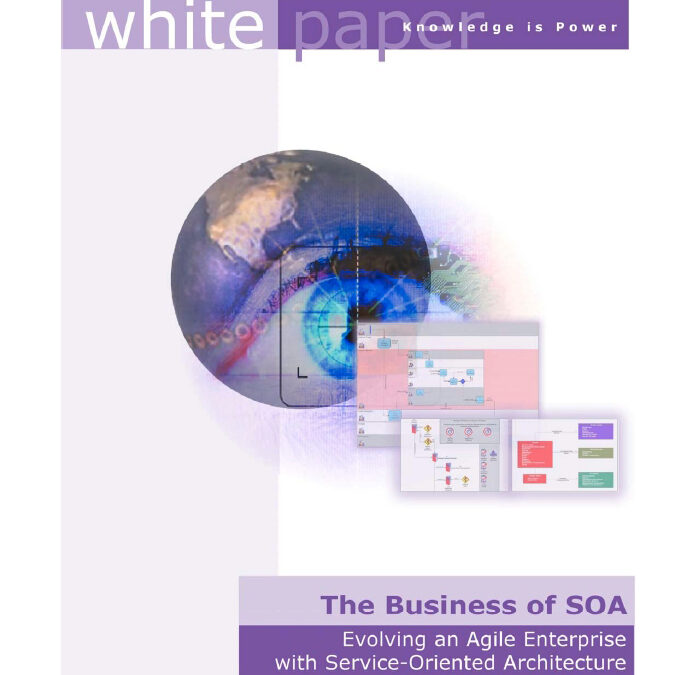
The Business of SOA: Evolving an Agile Enterprise with Service-Oriented Architecture
Labeled by industry experts as the “new order,” Service-Oriented Architecture (SOA) is the chief topic at organizations around the globe. The excitement stems from the realization that SOA technology presents a real opportunity to improve effectiveness at the enterprise level. Business leaders envision an enterprise that can quickly adapt to its changing environment with immediate and complete support from its system resources.

SOA Requires Organizational Change
I recently have been working on service-oriented architecture (SOA) models for various clients. Doing this, I have noticed that the models are fairly technical and mostly rudimentary.
Embracing Services: SOA Governance
Organizations are often mystified at how to implement Service Oriented Architecture (SOA). Leaders yearn to sprinkle magic ‘SOA pixie dust’ on their IT organization and transform design and development processes. But holistic architectures are not created by accident. Best practices are forged through the application of engineering discipline and rigor.
Many Global 2000 companies are not ready to embrace services. The design and development teams must first learn how to properly govern their IT processes.
There is an “A” and Silent “M” in SOA
The majority of SOA initiatives that are launched over the next three years will end in disappointment – some initiatives will end in complete failure, while others will simply not deliver the flexibility, reuse and efficiency that SOA promises.
This wont be because of any shortage of cool technology.
New Directions in BPMS Technology
Dr. Bruce Silver defines Business Process Management as a better way to think about the business, seeing across functional and organizational lines. The existing structure of most businesses is a vertical stovepipe arrangement, which goes against this kind of thinking. Great benefits can be achieved from the technology through process automation when BPM is employed, particularly with the human tasks involved. This allows for integration and agility within the enterprise. Another benefit is the ability to monitor the process metrics.

Where Do We Start? A Collaborative Approach to Business Process Management
You’ve been asked to improve how your organization works. But where to start? Do you just lock yourself away in a closet and attempt to figure out what’s going wrong or do you create an interactive web survey to elicit large volumes of improvement ideas? Based on our experience, we’ve found the most effective path to improvement lies somewhere in between. Using collaborative group working sessions, you can make better decisions and ultimately increase acceptance of change, by effectively leveraging the knowledge of your internal experts.













